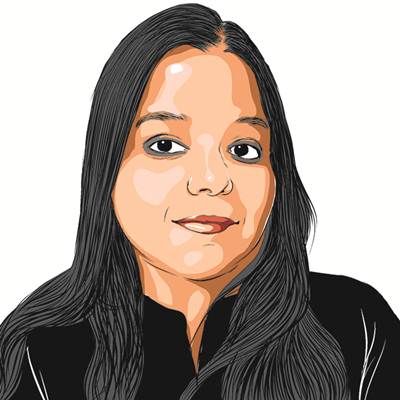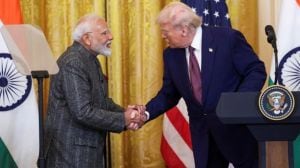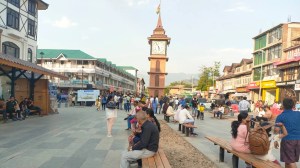Meet the sculptor whose Gurmukhi on artworks is taking ‘maa-boli’ Punjabi to the world
Harminder Singh Boparai was honoured by the Languages department of the Punjab government on the occasion of International Mother Language Day Tuesday.
 Proving that his mother tongue is his muse, Boparai started creating unique artworks by carving intricate Gurmukhi alphabets. (Express Photo)
Proving that his mother tongue is his muse, Boparai started creating unique artworks by carving intricate Gurmukhi alphabets. (Express Photo) “Main Gurmukhi da beta, mainu tor de ne akkhar (I am the son of Gurmukhi, these alphabets keep me moving)” — perhaps there are no better words than these penned by singer Satinder Sartaaj to describe the life and journey of Harminder Singh Boparai (42), a noted sculptor of Punjab, who lives and breathes his ‘maa-boli’ (mother tongue) and is now taking the language to the world.
It was almost two decades back when Boparai, then in his early twenties, was fascinated with scrap and discarded materials that he would see around him, and soon, he started converting them into artworks at his first workshop in the backyard of his home at Ghudani Kalan village of Ludhiana in Punjab.
Son of a farmer, his fascination for art and sculpting soon turned into a passion and he started working on all mediums, including wood, metal, steel or whatever his artistic mind would imagine as a piece of art. Eight years after he moved to the US in 2015, Boparai refused to leave his love for art and instead gave it a turn that is now taking the Punjabi language to the world.
 The Punjabi art created by Boparai has been exhibited in at least 18-20 countries, according to him. (Express Photo)
The Punjabi art created by Boparai has been exhibited in at least 18-20 countries, according to him. (Express Photo)
From a clock with numbers engraved in Gurmukhi to a wooden tree of alphabets or a wall graffiti with each alphabet chiselled with perfection, Boparai’s unique style of pumping life into Gurmukhi script with his art is now attracting Punjabi lovers from across the world.
Speaking to The Indian Express, Boparai says, “I was in my early twenties, during my college days, when I developed a fascination for scrap material and started converting them into artworks. I used to help my family with farming but soon my love for art took over everything and I opened a small studio in the backyard of my home. I moved to the US in 2015 but leaving sculpting or art was never a thought. I decided to take it to another level instead and started making artworks using Punjabi alphabets in Gurmukhi script. I create artworks in every medium, including wood, fiberglass, metal or whatever customers demand. Punjabi lovers from across the world get artworks made, either for their homes, gurdwaras, schools or other places. I feel my art is playing a crucial role in reaching our mother-tongue to the world.”
 On every visit to Ludhiana, Boparai makes sure his first studio in the backyard of his village is still alive and well. (Express Photo)
On every visit to Ludhiana, Boparai makes sure his first studio in the backyard of his village is still alive and well. (Express Photo)
Boparai says his artworks highlighting Punjabi language have reached at least 18-20 countries, including the US, UK, Canada, Malaysia, Germany, Australia, Brazil and others. “In 2019, I was invited to the Sikh Games in Australia where I created a unique ‘Maa Boli’ slate artwork measuring 5 feet by 8 feet. It was sold out for 16,000 Australian dollars and we donated the money to the Khalsa Aid charity,” he says.

Boparai says that his clients mostly include Punjabi diaspora and those settled in India who want to give a place to their mother-tongue at home, office etc. “They get customised artworks made such as ‘Jee Aayan Nu (welcome)’ written in Punjabi, a slate with alphabets written on them among others,” he says, adding, “Some also get them made for gurdwaras, schools etc where children learn Punjabi.”
Settled in Michigan in the US with his family, Boparai still makes it a point that his first studio in the backyard of his village is still alive and breathing whenever he visits Ludhiana. “I got a diploma in fine arts after I realized that I wanted to take sculpting as a profession but otherwise I was never good at academics,” says Boparai, who was honoured by the Languages department of the Punjab government on the occasion of International Mother Language Day observed Tuesday.













